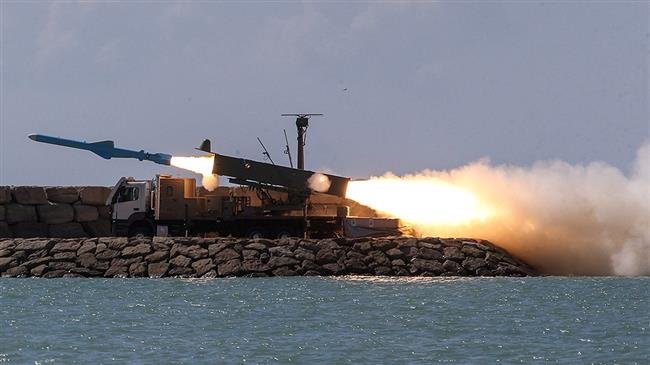The Qader and Qadeer missiles were fired from Iran’s Shaheed Naqdi destroyer and the missile-launching frigate Tabarzin respectively on the second day of the massive three-day drill, codenamed Velayat 97, on Saturday.
A surface-to-sea missile system also fired a Qader missile that destroyed designated marine targets.
The missiles, which have ranges from 250 to 300 kilometers, can be fired from vessels, onshore systems and aircraft.
The Iranian Navy’s unmanned aerial vehicles, equipped with various bombs and defense units, also successfully destroyed their targets.
The Navy’s air defense division managed to intercept and destroy an intruding drone belonging to the mock enemy with a range of domestically-built systems, including the Misaq shoulder-fired missile.
The domestically-made Tareq submarine fired an electric torpedo while the Ghadir submarine launched a domestically-manufactured torpedo called Valfajr.
In another operation, an SH helicopter fired a Mark 46 torpedo to detonate a marine target.
The exercises also involved commandos, who parachuted onto the ground to launch operations against mock enemy targets.
The Velayat 97 drill is being held in an area of two million square kilometers, from the Strait of Hormuz to the southeastern coasts of Makran, the Sea of Oman and the northern parts of the Indian Ocean, down to the 10-degree latitude.
In recent years, Iran has made major breakthroughs in its defense sector and attained self-sufficiency in producing important military equipment and hardware.
Iran has also conducted major military drills to enhance the defense capabilities of its armed forces and to test modern military tactics and state-of-the-art army equipment.
The Islamic Republic maintains that its military might poses no threat to other countries, stating that its defense doctrine is merely based on deterrence.
